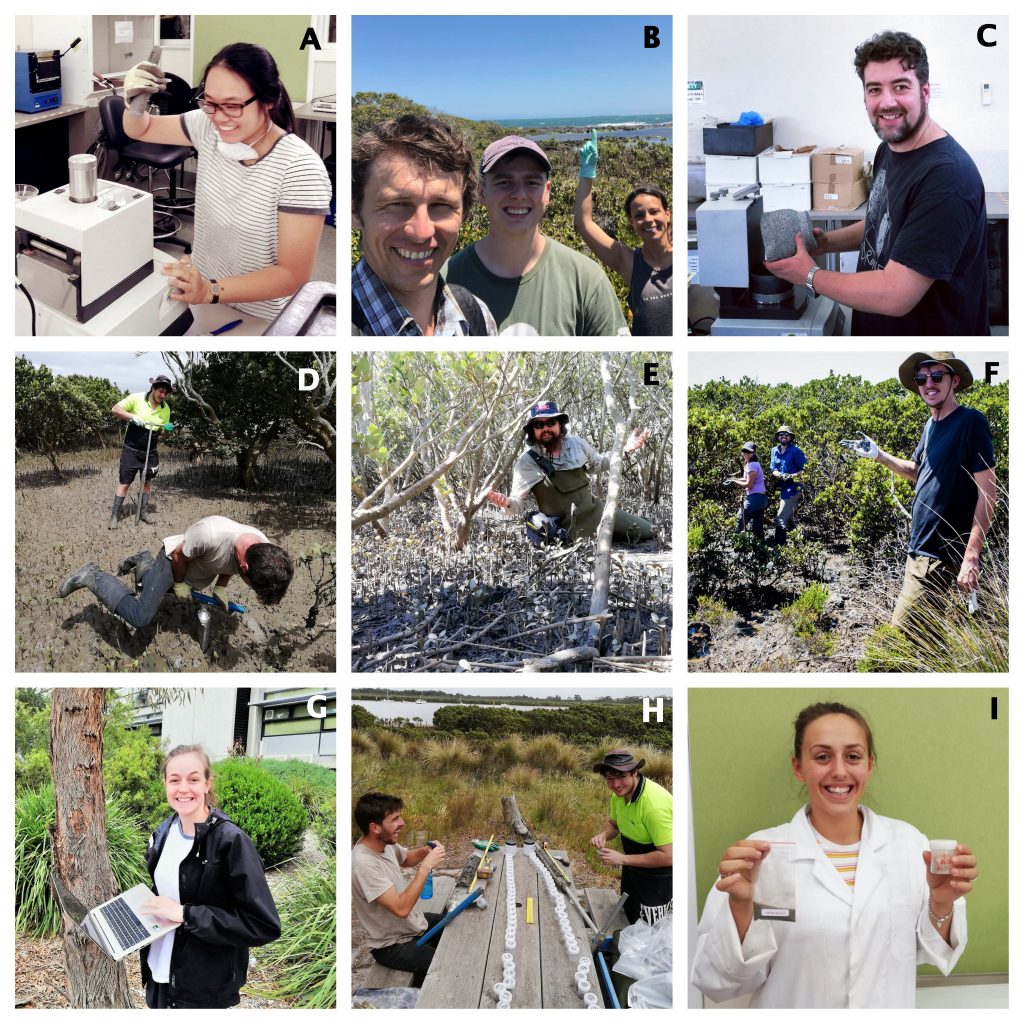For the last six months the BCL has been surrounded by enthusiastic volunteers, both current students and graduates, who have given us a hand with Blue Carbon research.
Some volunteers helped Pawel collect hundreds of soil cores. There was a lot of sinking mud, Victoria heat, and rolling thunderstorms. Some of them, Miles and Sam, we met straight on the Warneet Reserve field site. O! Warneet, that was the most difficult site to extract sediments from. Check-out Miles’ balancing act on top of the Russian pick-corer to get at least 50 cm of local sediments (img D).
Some sites were super easy, but nothing compares to the Koo Wee Rup site. The only obstacle there, was the great hospitality of the local landowner who invited Pawel and Mitchell for a tour around the historic HareWood House, bought them lunch, and introduced them to local activists! Other sites like French Island and Phillip Island were a great area of natural Victorian landscape that was a pleasure to hike and work through.
Once in the lab we chopped, dried, ground and beat the dust with Anupama, Kaitlin, Kate S, Tam, Jake, Charlie, Callum and Madeleine. Without them we wouldn’t have been able to finish our task on time. ENORMOUS THANKS to all our amazing volunteers!!!
- Tam Do (img A, F)
- Madeleine Callas (img I)
- Alex Dudkowski (img B)
- Saul Avery (img F)
- Jake Brown (img C)
- Kaitilin Bingley (img G)
- Kate Seymour
- Kate Rowe
- Anupama Nayak
- Sam Stevens (img D, H)
- Miles Thomson (img D, H)
- Mitchell Baum (img E)
- Charlie Townsin
- Callum Edwards
- Rebecca Spence

